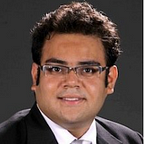Will the Indian Primary Healthcare please stand up!
Growing up in a Tier-2 town and in a family of doctors, I always took healthcare for granted. There were always doctors in family or an uncle’s clinic to go to and get treated.
However, living in Gurgaon for good part of past 8 years, I have seen a difference in how I think about healthcare now. When I think about Healthcare, I think of hospitals- Fortis, Max, Apollo, Medanta, Paras etc. Surprisingly I don’t think doctors or clinics. I think of branded hospital chains. I asked folks around me where they go in case of a medical need and the same names crop up.
This got me thinking where is the Primary Healthcare in Tier — 1. Where are the family doctors, the small clinics where I establish a connection with the doctor who understands and treats me over a period of time. Surprisingly the Primary Care layer is getting thinner and thinner in Tier-1. From a simple cold to a complicated surgery, it’s all moving the corporate hospital chains.
How large corporate hospital chains are expanding?
Large hospital chains in India understand that majority of their patients come from nearby T2/T3 towns. From what I have heard about 40% of Medanta patients come from UP. No wonder they are setting up another hospital in Lucknow.
Corporate hospitals understand this and they are tapping into Tier 2/3 towns. Here’s how it works:
It starts with a small board and weekend specialist (cardio/cancer/endo etc) in a local well-known clinic in Tier2/3 city. For eg. Medanta has its weekend visits and boards in a clinic in Hisar. They use this as a mechanism to expand their reach and refer patients to the mother hospital. Slowly the specialities are expanded and within in a few years, the clinic loses its original name and brand and become as an out-patient centre.
In Tier -1 the scenario is simple and direct— poach best doctors from the rival clinics and hospitals.
Why Large Hospitals
Trust, Insurance Coverage, Brand: T-1 cities now have an increasing migratory population with no ancestral roots and thus connections in the city. And when it comes to health, most people fear the worst and want to go with the trusted names like Medanta, Apollo. There is so much that a good rating on Practo can do to change my first instinct.
Health Insurance cover includes most large chains and thus crowd out small clinics and single-doctor OPDs. And not surprisingly a lot of large hospital chains have their own insurance arms — Apollo Munich, Max Bupa etc. Thus the reinforcement of these brand and perceived convenience.
Doctor’s perspective: For an engineer, coming from IIT, NIT or a MBA from IIM, ISB it’s instant acknowledgement of skill. But how do you decide whether a doctor is good or not?
Baring AIIMS which produces about 60 odd doctors per year and a few other top medical colleges there is very little brand value attached to different medical colleges. A doctor’s perception and brand value gets build when they practice in marquee hospital chains.
So most doctors prefer doing a residency or senior residency in large hospital to create a name for themselves. Even after that almost all private medical practitioners are attached to multiple hospitals and maintain very few private clinic hours.
What does this mean?
Higher Costs: Corporate hospitals have to cover for huge overheads — land, air-conditioning, large staff etc. and thus the costs of consultation range between Rs 700–1200.
End to End services: These large hospitals not only provide end to end medical care but also provide ancillary services like diagnostics, pharmacy etc. Thus limiting the market of such services for startups and micro-entrepreneurs. If my doctor trusts the test report from the hospital only and I get all my medicine on my way out, do I need to be bothered about apps for buying medicine and booking diagnostic tests (chronic is a different case and fight is relationships with nearby pharmacy and labs).
Less doctor patient time: Most Doctors in US spend less than 16 minutes with a patient. I can imagine it to be equal if not less in India. Hardly anytime to form a deep understanding of patient’s mental and physical state
Sales pressures leading to un-necessary procedures: I have no proof of this, but sales pressure and targets for doctors keep up cropping up in discussions and newspapers all the time. If its true then we aren’t really getting the best medical care.
The situation is grim and we have to cut down our healthcare cost and provide better coverage the Primary Healthcare system needs to come back. Will the Primary Healthcare in India please stand up!
